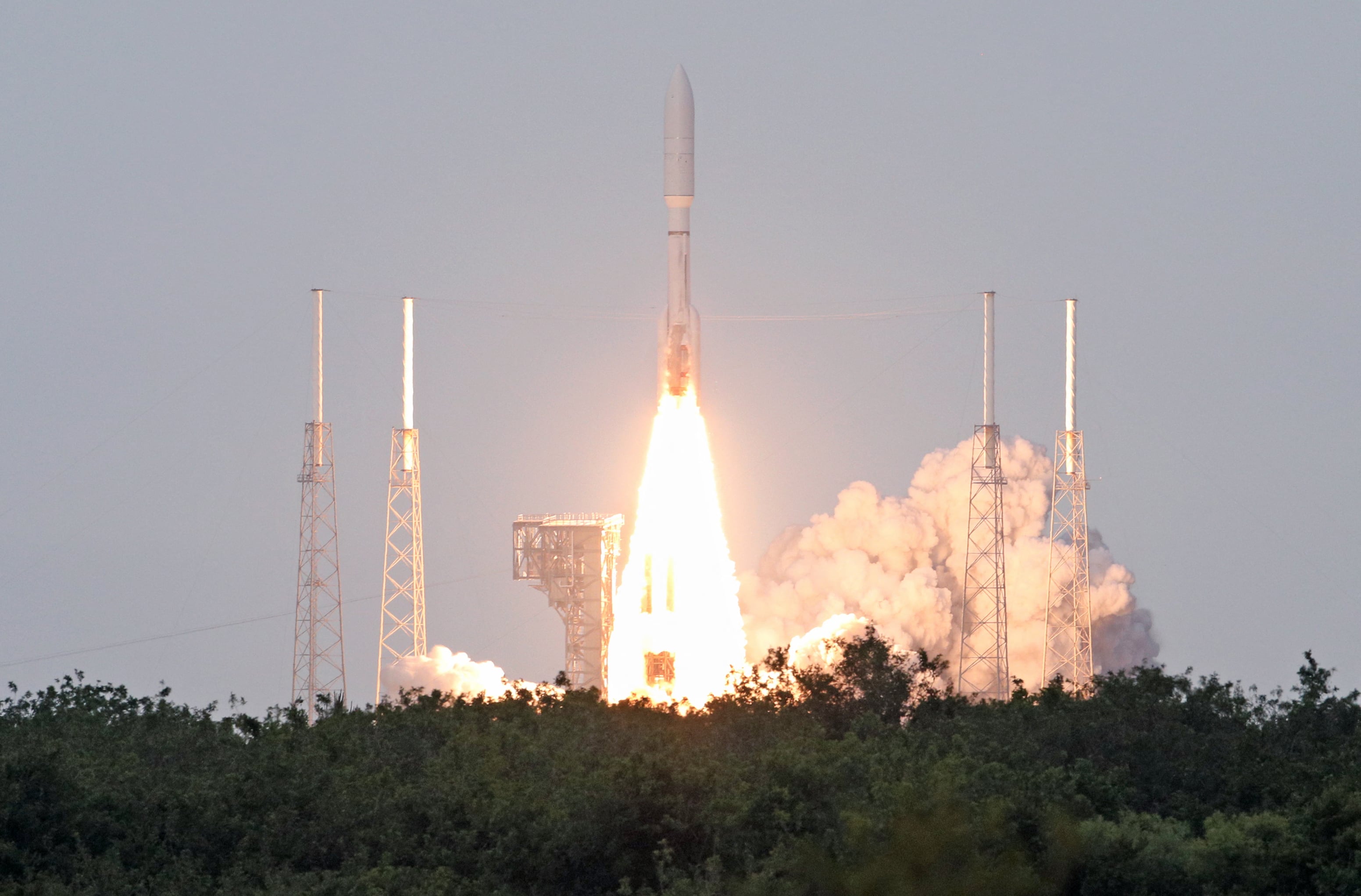The Army's Wideband Enterprise Satellite Systems are key to Defense Department satellite communications, enabling payload control for the Army's Defense Satellite Communications System and Wideband Global SATCOM. Both systems are central to providing long-haul, high-capacity communications as well as intelligence and surveillance for government users around the globe.
But the Army faces aging systems, tightening budgets and increased SATCOM demand. In a recent conversation, WESS Product Director Lt. Col. Joel Babbitt discussed those issues and more with C4ISRNET Editor Amber Corrin.
C4ISRNET also will hold a webcast with Lt. Col. Babbitt on Dec. 14.
C4ISRNET: Can you give us a general idea of the capabilities WESS provides and its functions?
LT. COL. JOEL BABBITT: The key thing is that WESS exists to meet the control mission that the Army has for payload control for the DSCS and WGS [constellation of] satellites. So, that is one of the three things that we do and that control mission provides the ability for all the units out there to access the WGS and DSCS satellites. So, we are not just doing it for the Army; we are doing that mission for the entire Department of Defense plus anybody else that uses the WGS and the old DSCS constellations.
The second and third thing we do really are kind of two sides of the same coin, which is the terminals beyond the baseband for the Army enterprise gateways.
We have 16 Army enterprise gateways worldwide and there is a total of 41 enterprise gateways operated and maintained by the Army, Navy, the Air Force [and the Defense Information Systems Agency]. We have 16 of those and there are a number of baseband systems that go within the building next to the big satellite dishes, and those baseband systems essentially provide things like timing, power and distribution of the data that goes into those big satellite dishes.
The other side of that coin I was telling you about, is those big terminals that sit just outside those buildings. Those big terminals are the MET terminals or modernization of enterprise terminals. The name MET just kind of stuck. Actually, 52B is the model. We've modernized up from the 52A dishes that we have out there, but the MET acronym just kind of stuck.
So, we have got 11 of those currently installed and turned over to the operating and maintaining commands, and we have got 89 of those in total going throughout the Department of Defense. Not all of them are being installed by us, but our contract in total provides for 89 of those throughout the Department of Defense. So, we are replacing most of the old dishes out there, now through about 2023.
C4ISRNET: It sounds like this is a pretty massive satellite modernizations program.
BABBITT: It is. So, out there in these satellite facilities there are a lot of dishes. Some of them are about as old as I am, and I'm about ready to make colonel, so I am pretty old. For an Army guy, anyway.
But, some of those dishes are really old, so what we are doing is we are going through and we are de-installing all those old dishes and putting in these new dishes – and it is not a simple process. It's about a six-month process to put in one of these dishes. It is equivalent to building a building. These things are 12.2 meters in diameter, so that's about 40 feet … when you look at these dishes, they are probably about the size of your house, or at least they are about the size of my house. They're pretty big. Lots of electronics down in the base, a very complex, multi-million-dollar piece of equipment that takes quite some time to install.
C4ISRNET: With the modernization effort, what are you looking to improve? What are going to be some of the improvements that are delivered as a result of that?
BABBITT: The existing satellite dishes that are out there are lower bandwidth, lower throughput. They require more power, their electronics are aged and dated. We have high failure rates on some of the older components, so…with these MET terminals, the 12.2-
meter terminals, we are putting in something that is sustainable, that has a much higher throughput, to be able to leverage the much higher throughput that the new WGS satellites are putting out.
C4ISRNET: So, higher throughput – that would facilitate full-motion video, the higher data types of demand?
BABBITT: Absolutely. One thing that is important for people to understand is that WGS [satellites] 1 through 6…while they were high-bandwidth back in the day when they were fielded, nowadays, they are relatively low-bandwidth. So, WGS 7 that just went into operation is a medium-bandwidth sort of satellite, but WGS 8, 9 and 10, the last three in the constellation and the first of which is launching this December, those are some really high-bandwidth satellites.
So, eight-elevenths of the bandwidth in the WGS constellation is actually going up with WGS 8, 9 and 10. That is a huge portion of the bandwidth. It is essentially quadrupling the bandwidth, almost, with the last three satellites. And so, our control mission is changing significantly and adapting to accommodate that much higher-bandwidth throughput. And with the MET terminals and the new WGS 8 baseline control software that we have for the payload control, we are now positioned for that WGS 8 launch.
C4ISRNET: So, with the quadrupling of the bandwidth with those last three satellites, what does that enable the soldier to do?
BABBITT: With a huge amount more bandwidth, we're able to do a few different things. One is we are able to increase the data throughput of existing assets that are using those new satellites. The second is we are also going to be able to bring in a lot of customers that are out there on the commercial satellite dishes, commercial satellites as well as commercial hubs. So, for instance, one of the big efforts that we are gearing up and preparing to do is for an exhort coming down from the Army, which is transport conversions and bringing the logistics dishes into the Army hubs. What that will allow them to do is instead of paying for hubs out there, for commercial hubs, we will be saving the Army somewhere around $15 million a year by bringing them into our enterprise gateways and out of the commercial gateways or commercial hubs.
So, for the Department of the Army, it will certainly be a cost saving measure. All of those pieces come together to equal bringing Army communications back into Army gateways, bringing Department of Defense communications back into DoD gateways and also increasing the bandwidth for the people that are already leveraging those gateways.
C4ISRNET: Clearly what you do involves other organizations outside the Army. Can you talk about what your partnerships look like and how they work?
BABBITT: WESS is a piece of the puzzle, and you have to understand that WESS exists to anchor those strategic communications. Without them, all you have got is satellites floating up in space that are unusable. So, we provide the usability for those satellites and we do that in partnership with the Air Force.
So, the Air Force program office, we work hand-in-hand to do all our testing. We are constantly working through their test facilities, they are working through our test facilities, making sure that what they are building in the satellite can be fully leveraged via the ground infrastructure that we put in.
In addition to that, Army Strategic Command and U.S. Strategic Command work together to get our requirements for the control of the WGS satellites. And then, in addition to that, we also work closely with DISA and we work with the Air Force Wideband Enterprise Terminals office. And then for the Missile Defense Agency, we are doing all that work for them as well. The MDA depends on WESS to build their satellite backbone. Because of that, we have very high requirements for some of their communications capabilities.
When it comes to strategic infrastructure, WESS really has what I would call an outsize role in building the enterprise infrastructure, as well as in the innovation of the enterprise infrastructure. That is really important because what we field within WESS ends up making its way to all the other facilities out there.
For instance, one of our most recent projects is the power distribution rack. It is not sexy, it is not exciting, but turns out, no power equals no comms, and most of the power distribution racks out there are in the 40ish-year-old realm. So, because of that, they are very outdated and they cause outages, so we went through an effort to create the new power distribution rack, we brought in all the 30-amp circuits that were not required 40 years ago that were kind of bolted on in the interim and we took care of business. And that has now gone viral throughout the entire SATCOM gateway infrastructure.








